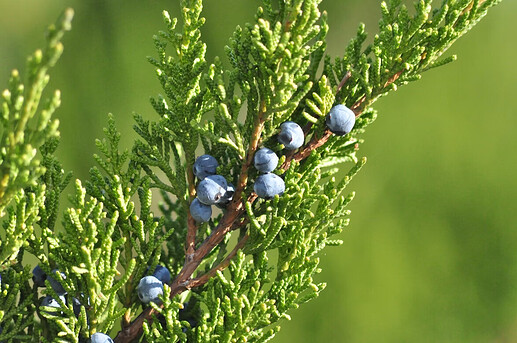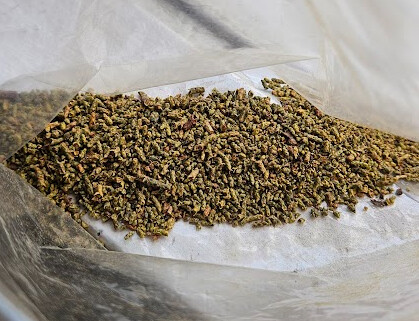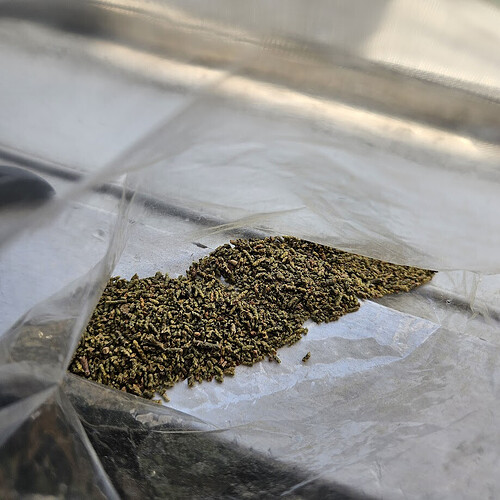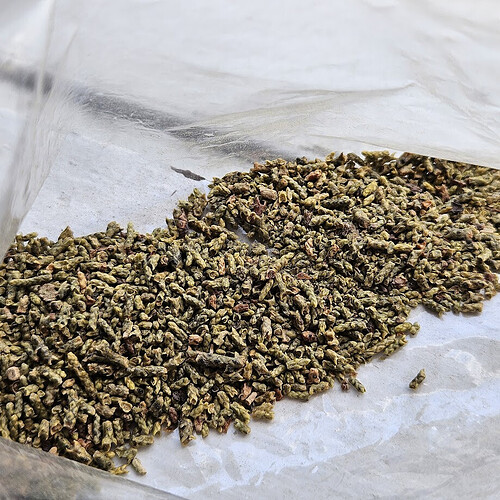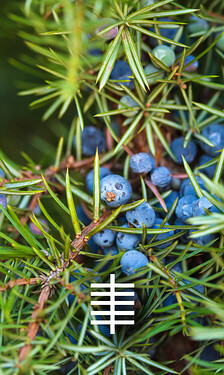Next up on our ogham journey is Idad. Not sure what ogham is? Here is a quick refresh…
Ogham is an ancient Irish inscription alphabet that was used to inscribe headstones and other important markers. In mythology, it was created by the God Ogma (OH-muh) to warn Lugh about a plot to steal his wife. Today, Ogham is used in magic and divination.
If you want to learn more about what ogham is in general, I wrote about that here: Irish Tree Language - The Ogham ![]()
I also have a video explaining the origin story of ogham that you can watch here: https://youtu.be/CWEm2pcAFc8
Idad (pronounced ih-dahd) is the fifth fíd of the fourth and final aicme. Like the previous fíd Edad, it also has no known translation. Interestingly, Idad is also connected with Yew, much like Edad. However, it is also connected with ivy and Juniper. For this post, and in my practice, we will connect Idad with the Juniper tree.
This is a fíd of aging, wisdom, and memories. Idad connects us with our ancestors, the past, and the elders who have come before us. We can see this reflected in the word oghams connected with Idad.
According to Weaving Word Wisdom, there are three traditional word oghams associated with Idad. These are:
- sinem fedo - oldest of woods, oldest tree, oldest letter, older than letters
- caínem sen - fairest of the ancients
- lúth lobair - energy of an infirm person
We can read part of these word oghams from The Ogham Tract.
Siniu fedaib, oldest of woods, that is idad, yew, with him; for siniu fedaib is a name for service-tree. Hence it was given to that letter in Ogham named idad, yew, i, for hence the name idad was put for it; for idad, yew, is a name for ibur, service-tree.
If you note from the above quote, the Ogham Tract associates Idad most with the yew tree. Interestingly, there is no ogham fíd associated with Juniper in the Ogham Tract, despite the sacred place Juniper holds in Irish and Scottish folk practices.
Idad is more than the illness and breakdown that comes with age. It calls on the elders, those with the experience and wisdom to guide others through life. This fíd is a connection to our family lines, both by blood and by choice; our ancestral land, our culture, and our family are all represented in this fíd.
This fíd also covers the wisdom of tradition and survival, including things such as folklore, mythology, and family traditions. Legacy is also represented by this fíd as it connects the generations together, from elder to infant, over and over again.
The Juniper Tree
Known in Ireland as Aiteal, the Juniper (Juniperus communis) is an evergreen shrub that can grow in pretty much any soil. It prefers limestone, though, or other rocky areas. It can be grown from seed, but it is easily propagated. If the conditions are right, Juniper can easily grow to be a small tree.
The trees produce flowers of different sexes on different plants, and the berries are dark, almost black. Birds really enjoy eating the berries, and commercially, the berries are used to flavor gin.
These images are of some Western Juniper (Juniperus occidentalis) I dried when I lived in Oregon. This little bag has come with me since then, and I haven’t lived in Oregon since 2020. I use Juniper when something needs a really, really deep cleanse. This small bag used to be halfway full. Now, it’s almost empty.
In Irish and Scottish practice, Juniper is heavily associated with ritual purification and cleansing, both of homes and cattle. This practice is known as Saining, and much like smudging, it usually has a very structured method of performing. You can find an example of a saining ritual here. Please note, this link takes you to an archived version of a website that is no longer available.
Erynn Rowan Laurie writes that the Carmina Gadelica has several charms listed for the ritual harvest of Juniper to use as a charm against drowning, danger, and fear. I looked for the charms, but I had no luck in finding them. I did find other information about saining and Juniper from a different website.
“Juniper is another tree whose branches were sometimes hung above the doors and windows on auspicious days or burned in the fire. Juniper burning, which formed part of the New Year rituals in some parts of the country, seemed to have a dual purpose. Not only was it supposed to ward off witches and evil spirits but, at a more practical level, it cleansed the house of pests and diseases. The branches were dried beside the fire the night before, and when all the windows and doors were shut, fires were lit in each room until the whole house was full of their acrid smoke. When the coughing and sputtering inhabitants could stand it no longer, the windows were opened, and the process was repeated in the stables.”
In Divination
In a divinatory reading, Idad is heavily connected with ancestors, longevity, and memory. Remember that these keywords also connect with everything related to them, not just people or human life. Our ancestral ties include our relatives, but they also include the traditions of our people and the culture we grew up with. Longevity includes living longer, but it also includes the survival of memories and folklore.
Here are some keywords I’ve come up with in my studies for Idad regarding divination.
- ancestors
- spirit work
- reincarnation
- memory
- generational trauma
- history
- folklore and myth
- traditions
- survival
- the past
At the end of every fíd in her book, Erynn has questions and linked concepts to think about for each one. For Idad, she writes the following…
How does my past make me who I am today? How do I understand my past to decide whom I become?
A Personal Note
When I first moved to Oregon in 2018, the Western Juniper tree was the first I connected with. This was easy because they are everywhere in the high desert East of the Cascades. I also really enjoy their fragrance, and I like to think it’s an ancestral memory from the use of Juniper in Irish and Scottish cleansings from long ago. To this day, Juniper is one of my favorite scents and a treasured plant ally. Though the Idad is less about the plant and more about the meaning of the fíd, my connection to Idad is made stronger by my connection to Juniper.
Sources and Further Reading
– Celtic Ogham Symbols and Their Meanings
– The Ogham Tract
– Weaving Word Wisdom by Erynn Rowan Laurie

